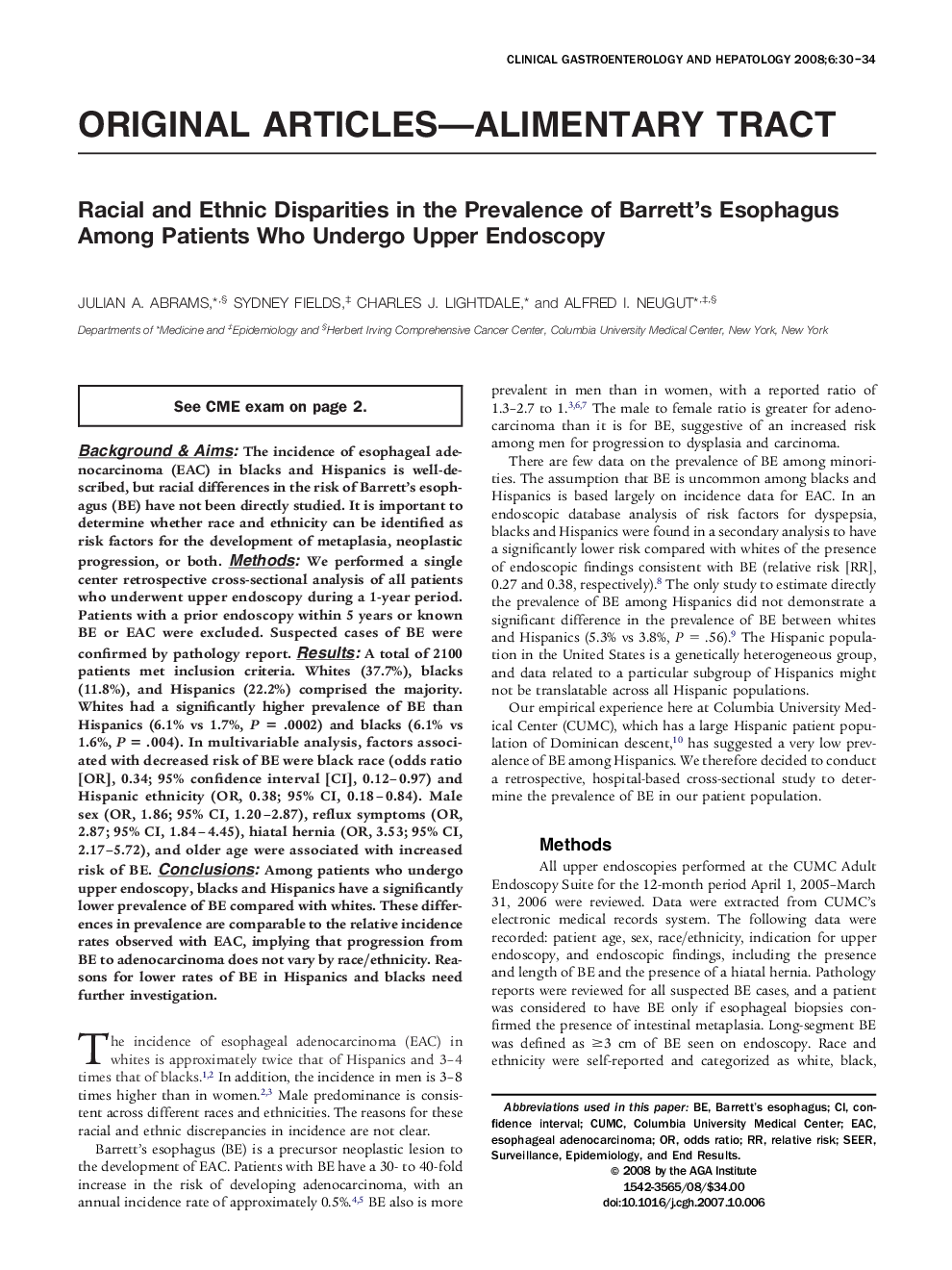| Article ID | Journal | Published Year | Pages | File Type |
|---|---|---|---|---|
| 3284923 | Clinical Gastroenterology and Hepatology | 2008 | 5 Pages |
Abstract
Background & Aims: The incidence of esophageal adenocarcinoma (EAC) in blacks and Hispanics is well-described, but racial differences in the risk of Barrett's esophagus (BE) have not been directly studied. It is important to determine whether race and ethnicity can be identified as risk factors for the development of metaplasia, neoplastic progression, or both. Methods: We performed a single center retrospective cross-sectional analysis of all patients who underwent upper endoscopy during a 1-year period. Patients with a prior endoscopy within 5 years or known BE or EAC were excluded. Suspected cases of BE were confirmed by pathology report. Results: A total of 2100 patients met inclusion criteria. Whites (37.7%), blacks (11.8%), and Hispanics (22.2%) comprised the majority. Whites had a significantly higher prevalence of BE than Hispanics (6.1% vs 1.7%, P = .0002) and blacks (6.1% vs 1.6%, P = .004). In multivariable analysis, factors associated with decreased risk of BE were black race (odds ratio [OR], 0.34; 95% confidence interval [CI], 0.12-0.97) and Hispanic ethnicity (OR, 0.38; 95% CI, 0.18-0.84). Male sex (OR, 1.86; 95% CI, 1.20-2.87), reflux symptoms (OR, 2.87; 95% CI, 1.84-4.45), hiatal hernia (OR, 3.53; 95% CI, 2.17-5.72), and older age were associated with increased risk of BE. Conclusions: Among patients who undergo upper endoscopy, blacks and Hispanics have a significantly lower prevalence of BE compared with whites. These differences in prevalence are comparable to the relative incidence rates observed with EAC, implying that progression from BE to adenocarcinoma does not vary by race/ethnicity. Reasons for lower rates of BE in Hispanics and blacks need further investigation.
Keywords
Related Topics
Health Sciences
Medicine and Dentistry
Gastroenterology
Authors
Julian A. Abrams, Sydney Fields, Charles J. Lightdale, Alfred I. Neugut,
